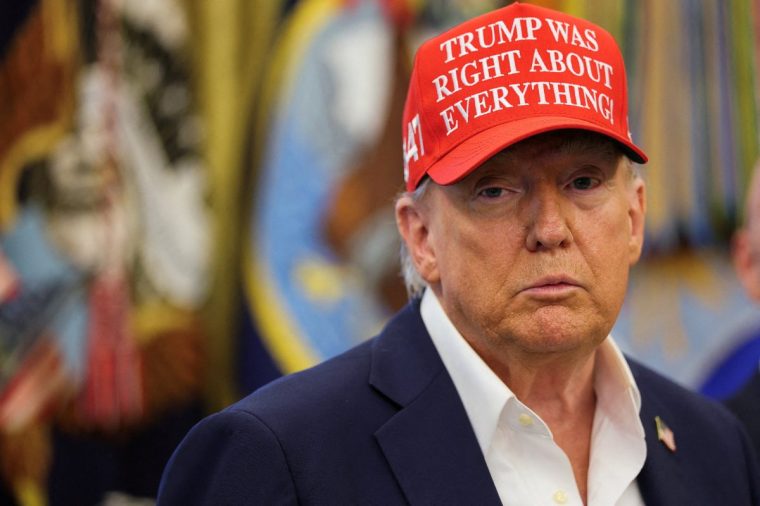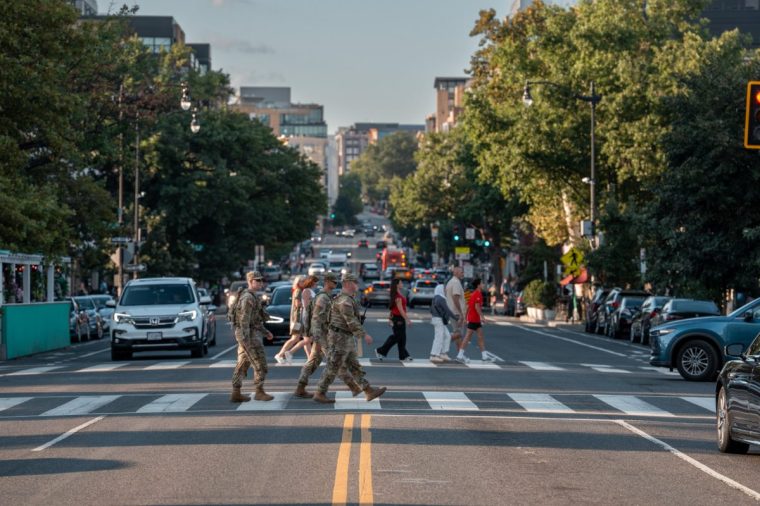Unlike his first term in office, this time there are no voices of restraint in the president’s inner circle attempting to hold him back
WASHINGTON DC — US President Donald Trump spent the weekend doubling down on his threats to send National Guard troops and federal law enforcement agents onto the streets of Democratic Party-governed towns and cities across the nation.
Chicago is now firmly in the president’s sights, after he falsely claimed on Friday that the city’s residents are “screaming for us to come in”.
As the president indicated earlier this month, the current show-of-force underway at his behest in Washington DC is just the start of a plan that could see troops deployed in additional cities including New York, Los Angeles, San Francisco, Oakland and Baltimore.
In Trump’s entirely concocted justification for armed intervention, the military operations in the nation’s capital have proven the case for local leaders to be over-ruled so that order can be restored in cities where no disorder is currently evident.
At the Pentagon, military officials have reportedly drawn up plans to deploy thousands of National Guard troops to America’s third-most populous city by the end of next month. “When we’re ready, we’ll go in”, the president insisted, claiming that “Chicago is a mess. You have an incompetent mayor, grossly incompetent”.
The use of active duty US Army troops is also being mulled, after Trump indicated a readiness to deploy them if necessary.

In Washington DC, he claimed the National Guard has done “an incredible job…and we haven’t had to bring in the regular military, which we’re willing to do if we have to”.
During his first administration, Trump’s desire to send the army onto the streets of Minneapolis in the aftermath of the police killing of George Floyd, an unarmed black man, was opposed by General Mark Milley, his then-Chairman of the Joint Chiefs of Staff and Mark Esper, his then-Defence Secretary.
This time around, there are no similar voices of restraint in the president’s inner circle attempting to hold him back.
The Governor of Illinois, J.B. Pritzker – a possible challenger for the Democratic Party’s presidential nomination in 2028 – warned the White House that “there is no emergency that warrants the President of the United States federalizing the National Guard”.
He accused Trump of “attempting to manufacture a crisis, politicise Americans who serve in uniform and continue abusing his power…we’ll continue to follow the law, stand up for the sovereignty of our state, and protect Illinoisians”.
Mayor Brandon Johnson of Chicago insisted that any Guard deployment in his city would be “unlawful…uncalled for and unsound”.
But as Trump demonstrated in Los Angeles in June, he is perfectly willing to push the envelope of his authority to over-rule state governors and deploy the National Guard against their will.

His federalisation of California’s National Guard in June occurred in the teeth of opposition from Governor Gavin Newsrom, as Trump insisted force was needed to combat protests against his administration’s mass deportation of immigrants. In that case, 4,000 members of the National Guard and 700 Marines were deployed in a show-of-force that Newsom described as “political theatre” that was “unnecessary and deeply unpopular”.
But if Trump seeks to emulate his Washington DC test-case on a national scale, he will face considerable legal hurdles. Since it does not enjoy statehood, the capital city’s unique governing arrangements permitted the president to suspend part of a 1973 law that grants Washingtonians to right to govern their own affairs. In other major cities he will not have that capacity, and has no legal basis to seize even temporary control of their police departments.
As far as active duty US troops are concerned, the 1878 Posse Comitatus Act bans the President from using military personnel as a police force. But Trump has already hinted at his willingness to invoke the largely untested Insurrection Act of 1807 to justify their deployment domestically by citing a rebellion or armed uprising.
Trump appears determined to test the limits of his authority by confronting Democrats on the issue of law-and-order ahead of mid-term elections in fourteen months time. Governor Wes Moore of Maryland, another prominent Democrat mulling a presidential run, pugnaciously dared Trump to walk the streets of Baltimore alongside him in order to assess the true state of crime there. “Donald, we can get you a golf cart if that makes things easier”, Moore teased on social media. “Just let my team know”.
Trump spurned the offer, accusing Moore of adopting “a rather nasty and provocative tone”.
On his own social media account he falsely claimed that one week after he placed troops on the streets of Washington DC, “there is NO CRIME AND NO MURDER IN DC! When it is like that in Baltimore, I will proudly ‘walk the streets’ with the failing, because of Crime, Governor of Maryland”, he proclaimed.
Meanwhile, in New York, civil rights groups are preparing for the worst. On Sunday evening they hosted a “Do Not Turn On Us” webinar, encouraging residents to educate soldiers in their legal right to disobey orders that violate their own oath to protect the country’s constitution
